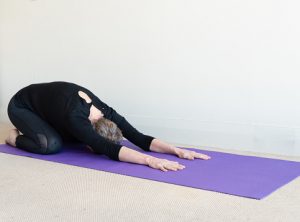 Oftentimes, the last thing people with achy joints want to do is move around. Usually, it’s out of fear that the inflammation in their joints and the pain they’re experiencing will only get worse. But although arthritis symptoms stop people from partaking in physical activity, in many cases, it’s the best thing they could do for their health.
Oftentimes, the last thing people with achy joints want to do is move around. Usually, it’s out of fear that the inflammation in their joints and the pain they’re experiencing will only get worse. But although arthritis symptoms stop people from partaking in physical activity, in many cases, it’s the best thing they could do for their health.
No, that doesn’t mean you have to turn into a professional athlete in the blink of an eye to make your joint pain go away. But not shying away from exercise is the first step to alleviating the symptoms and keeping yourself stronger overall.
Advertisement
In particular, there are three areas you need to focus on. These are balance, flexibility, and strength. Let’s take a look at why each of them is important for your joints and what kind of exercises you can perform to improve.
Balance
Old age is associated with an increased risk of falls, and one of the main reasons for this is a loss of balance. When you don’t have a problem balancing ourselves, you just take it for granted. But as you age, you need to pay more attention to the subtle ways in which our body holds itself together. Working on your balance is an effective way to prevent falls and reduce the risk of injury, improve core stability, and increase your kinesthetic sense, which is the awareness of your own movement and the position of your joints.
A good way to start your balance training is by standing on one foot for about a minute. Repeat three to five times, then switch feet.
Once you’re comfortable with this exercise, try a more advanced one. Put your right foot in front of your left foot. With your eyes closed, cross your arms over your chest. Hold for a minute. Repeat three to five times, then switch feet
Flexibility
Being flexible means having a wide range of movement in your joints, along with adequate length in the muscles crossing those joints. With flexible joints, your body uses up less energy to bend and move, which means a lower likelihood of injuring yourself and better physical aptitude. Stretching—the primary approach to developing your flexibility–can help relieve the aches and stiffness in your aging joints.
One of the most comfortable and relaxing stretches you’ll ever do is the child’s pose. Start in a tabletop position. Spread your knees wide and sit your butt on your heels, lowering your upper body between your legs. Extend your arms in front, keep your palms on the floor. Hold for a minute, and repeat three to five times. If you feel tightness in your hip flexors, do not try to work through the pain. Stay within your range of motion—it will improve over time.
A more challenging stretch for developing flexibility is the bridge pose. Start by lying down on your back. Bend your knees, keeping your feet on the floor. Bring your hips up by pressing through your hands and heels, aiming for a straight line from the shoulders to the knees. Hold for 15 seconds and repeat eight times.
Strength
When we talk of strong people, we think of their ability to lift heavy weights, but the essence of strength has more to do with our body’s endurance and physical fitness. Strength training is important for the joints as it keeps them supple and strong along with increased bone density and muscle mass, which also contribute to joint health. Not to mention that strength training increases body awareness and confidence (which translates into better balance) and helps with weight management (saving the joints from unnecessary stress).
The following exercises do not require any special equipment and can be performed safely by people with troublesome joints
The first one is called the dead bug. Start lying flat on your back, with your arms and legs (knees bent) in the air. Keep your lower back pressing into the floor. Gradually lower the right leg and left arm towards the floor, until your heel hovers above it. Return to the starting position. Repeat for the opposite leg and arm. Repeat 20 times switching sides.
Advertisement
You can also do a chair squat. Standing in front of a chair with your feet shoulder-width apart, shift your weight into the heels and push back at the hips. Gradually lower your body until you can touch the seat of the chair. Return to the starting position by pushing through the heels and engaging your gluteal muscles.
As with any physical activity, if you’re suffering from chronic pain or if you have new injuries, consult with your doctor before starting on a new regimen. Happy training!
Related: Combination exercises beneficial for seniors
